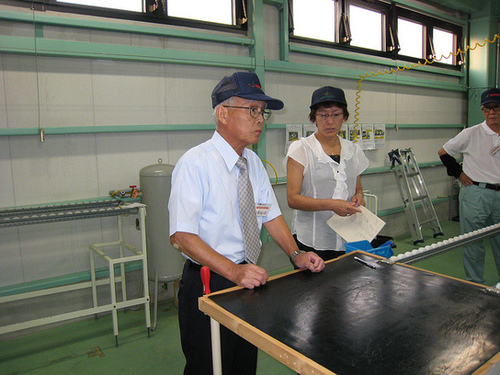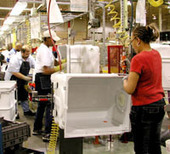Nov 26 2011
And the Winners of the Gastev Cup for 2011 are…
This is a translation of the announcement in the Russian Business Excellence magazine. You can also watch the award ceremony on Youtube, in Russian without subtitles, from honorable mentions to the cup itself.
The Gastev Cup for business effectiveness
The overall winner and winners in individual categories of the Gastev Cup, Russia’s first competition in business effectiveness, were announced during the Moscow VI Forum on Development of Production Systems, formerly known as Lean Forum. The ceremony capped a long enough period of checking the conformity of the production systems of the candidate companies to the contest requirements. For several months the team of independent auditors visited the candidates, from St. Petersburg to Novosibirsk.
And the winners are:
- Cup winner – the TMS-group from Almetyevsk.
- Leader in human resource development – the Grand Gift company from Moscow.
- Leader in process development – the Russian Coatings company from Yaroslavl.
- Winner in the Production System Industry category – OAO “RZD”.
- Winner in Lean regional government category – the Republic of Tatarstan.
Honorable mentions were also also awarded to Packer, from the October region, Saturn -Gas Turbines from Rybinsk, Spartacus from Kazan, and Elsib from Novosibirsk.
Expert opinion from Konstantin Novikov
Konstantin Novikov is general director if Stal steel works in Omsk, and member of the Council of Lean Production Professionals.
Our congratulations to the winners and runners-up of the first Gastev Cup Gasteva. The second cup is exactly one year away. In 2012, if the TMS-group wants to keep the cup, they will have to fight for it again, developing their people and their production processes, and demonstrating a commitment to continuous improvement.




Nov 27 2011
Assembly Mag’s John Sprovieri responds to Kevin Meyer about Lean at Whirlpool
Via Scoop.it – lean manufacturing

John Sprovieri’s article opens with the following :
I could see “celebrating accomplishments” as a role for the company’s Public Relations department in an ad page. But is a reporter supposed to be a cheer leader for the companies he covers?
Via www.assemblymag.com
Share this:
Like this:
By Michel Baudin • Management, Press clippings 0 • Tags: Lean manufacturing, Management